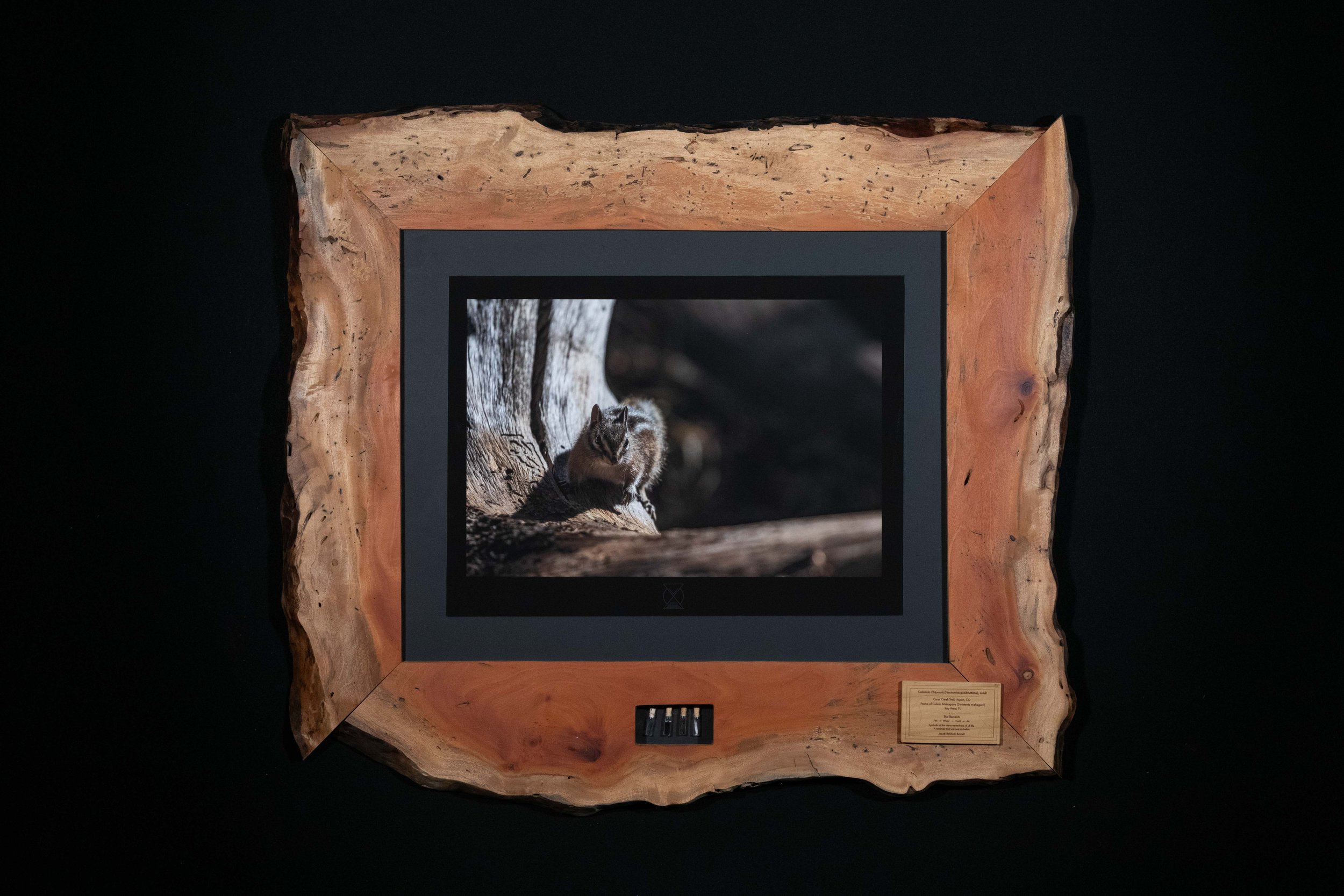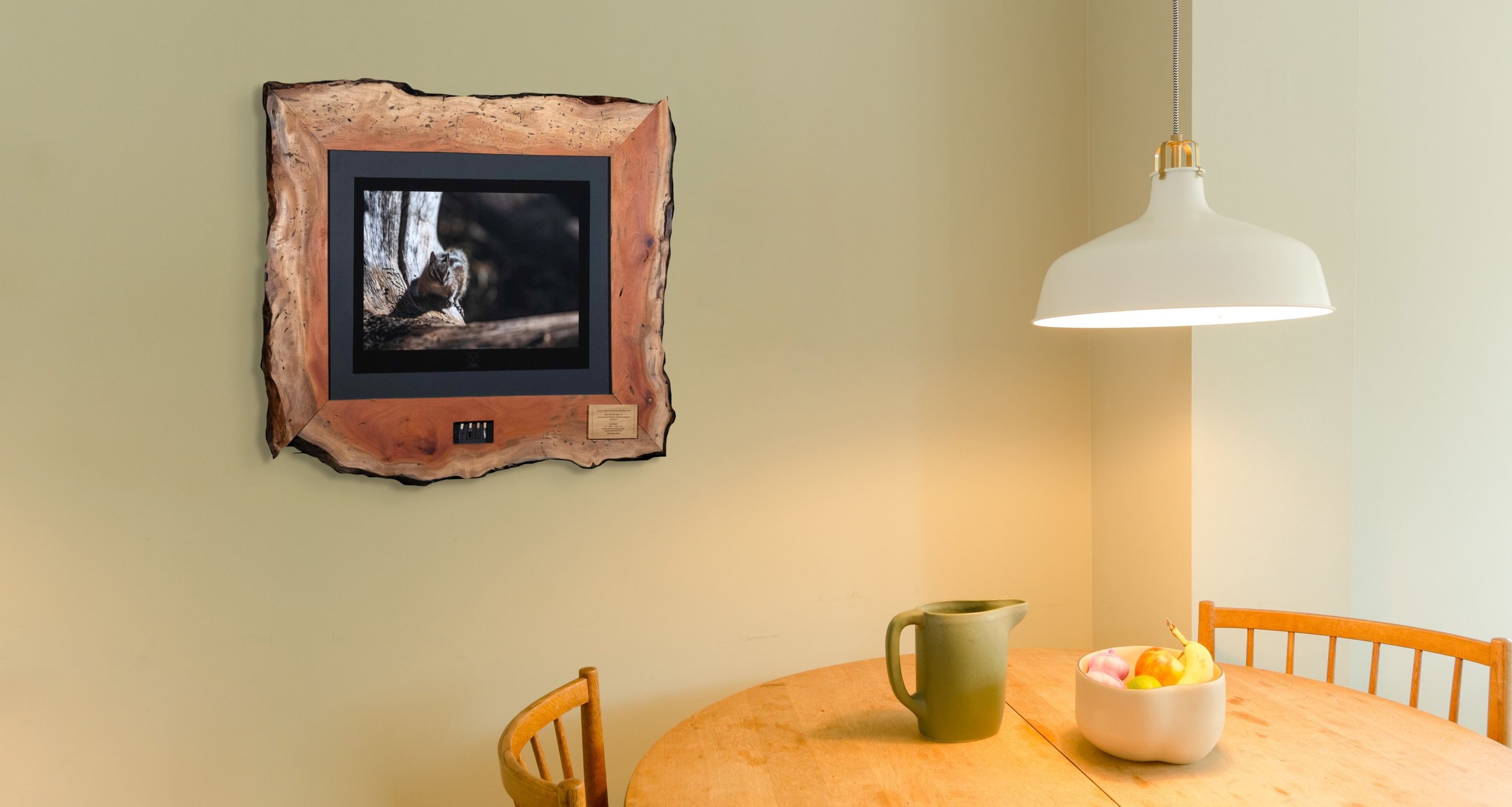Colorado Chipmunk - Cross Creek Trail, Aspen, CO




Colorado Chipmunk - Cross Creek Trail, Aspen, CO
Colorado Chipmunk (Neotamias quadrivittatus), Adult
Resting from a morning hike and eating some lunch just outside of our tent, this little chipmunk was very curious. He darted around the campsite peeking out at various times. It even got so bold as to try and steal some trail mix out of my buddy’s bag when he set it down for a moment. This photo was taken 10/18/2020 at 11:57 am.
WeForest Donation: $320 (What is this?)
Print Number: 1/3
Print Size: 15 x 22.5
Total Dimensions: 39 x 43
Hanging equipment and certificate of authenticity included.
PHOTOGRAPH
Colorado Chipmunk (Neotamias quadriviumltatus)
Found throughout the majority of Colorado, and spilling into New Mexico, Utah, and Arizona, Colorado Chipmunks can be found in woodlands, scrublands, and aline tundra ecosystems. Of the three Chipmunks that are found in Colorado—the others being the Least Chipmunk and the Uinta Chipmunk—the Colorado Chipmunk is the largest, although still much smaller than squirrels. They, as all Chimpmunks, eat mainly seeds, berries, flowers and insects, building up stores of goodies for leaner months, and hibernating through the thickest part of winter. Their version of hibernating is not quite true hibernation like that of a Polar Bear for example. Chipmunks, sleep for days at a time but then wake to go about normal rituals, afterwords sleeping for days again.
LOCATION
Cross Creek Trail, Aspen, CO
Located actually nearest Minturn, CO, it is just a 15-20 drive from Aspen Village and is a worthy spot to trek to. The Cross Creek Trail is an off the beaten path for sure, but my buddy and I found out about it from some local people who said it was great for wildlife and also led to a beautiful lake. The lake, aptly named, Surprise Lake, is off of a different trail and it took us a couple times to find, but it was indeed beautiful. And the wildlife was present as well. One of the more intense animal encounters I have had in the wild took place at our Campsite where a Bull Moose ended up surprising itself as it wandered nearly straight into our tent and then saw us. All three of us only realizing our proximity to each other once we were a mere 15 feet away. Luckily it was happy to simply go around us and didn’t want to stick around too long. Unfortunately I was not quick enough to snag a quality photo, but interestingly we were able to determine that we saw the same Moose the next day on out hike thanks to a weird slanted nature to the Moose’s rack.
FRAME
Cuban Mahogany (Swietenia mahagoni)
Cuban Mahogany is one of three species of Mahogany and it was originally the most widely used of the three. Nowadays, Honduran Mahogany is the much more prevalent wood and what most people would recognize as Mahogany. Native to the Carribbean, Cuban Mahogany’s northernmost range does include the far south of Florida, including the Keys. I happen to get all of my Cuban mahogany from a salvager in the Keys who removes the trees from construction sites before cutting it into slabs and drying it.
THE ELEMENTS
Fire, Water, Earth, and Air
In the display case in the bottom of the frame, four items are preserved glass vials. The items represent the elements: fire (wood charcoal), water (mineral oil), earth (soil), and air (a milkweed seed). I include these items in my work as a symbol of the interconnectedness of all life on earth, and as a reminder that humans must do better.
The Plaque
I engrave a wooden information plaque for each work. The plaque includes what the photograph is of, the location of the photograph, what type of wood the frame is made of and where I got the wood from. The plaques also explain what the vials are in each display case, and even state the meaning of my logo. The plaques are attached magnetically and can be removed to read or to store on the back of each frame if you prefer not to have it displayed on the front.

